Bloomington rejects 2 Hopewell bids, sets new course ‘democratizing neighborhood development’
At a meeting on Monday, Flintlock LAB was authorized by Bloomington's RDC to start a new process as an alternative to the city’s redevelopment efforts up to now for the former IU Health hospital site. The two responses to the city's public offering of the land were formally rejected by the RDC.
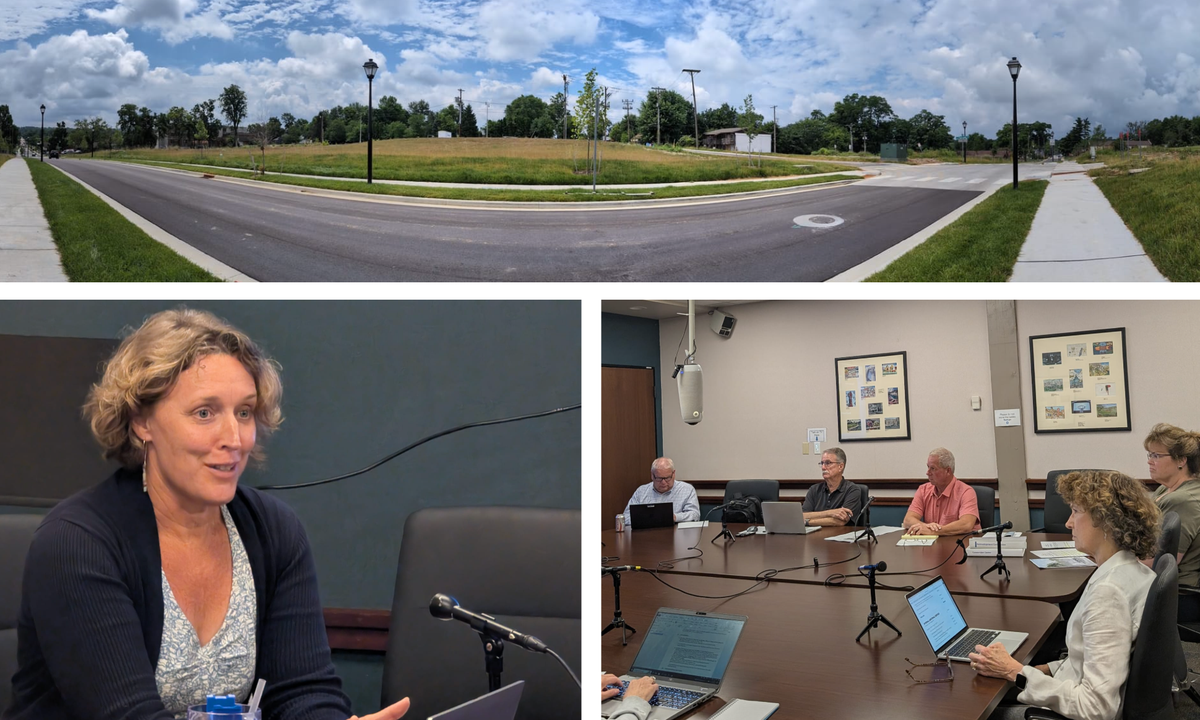

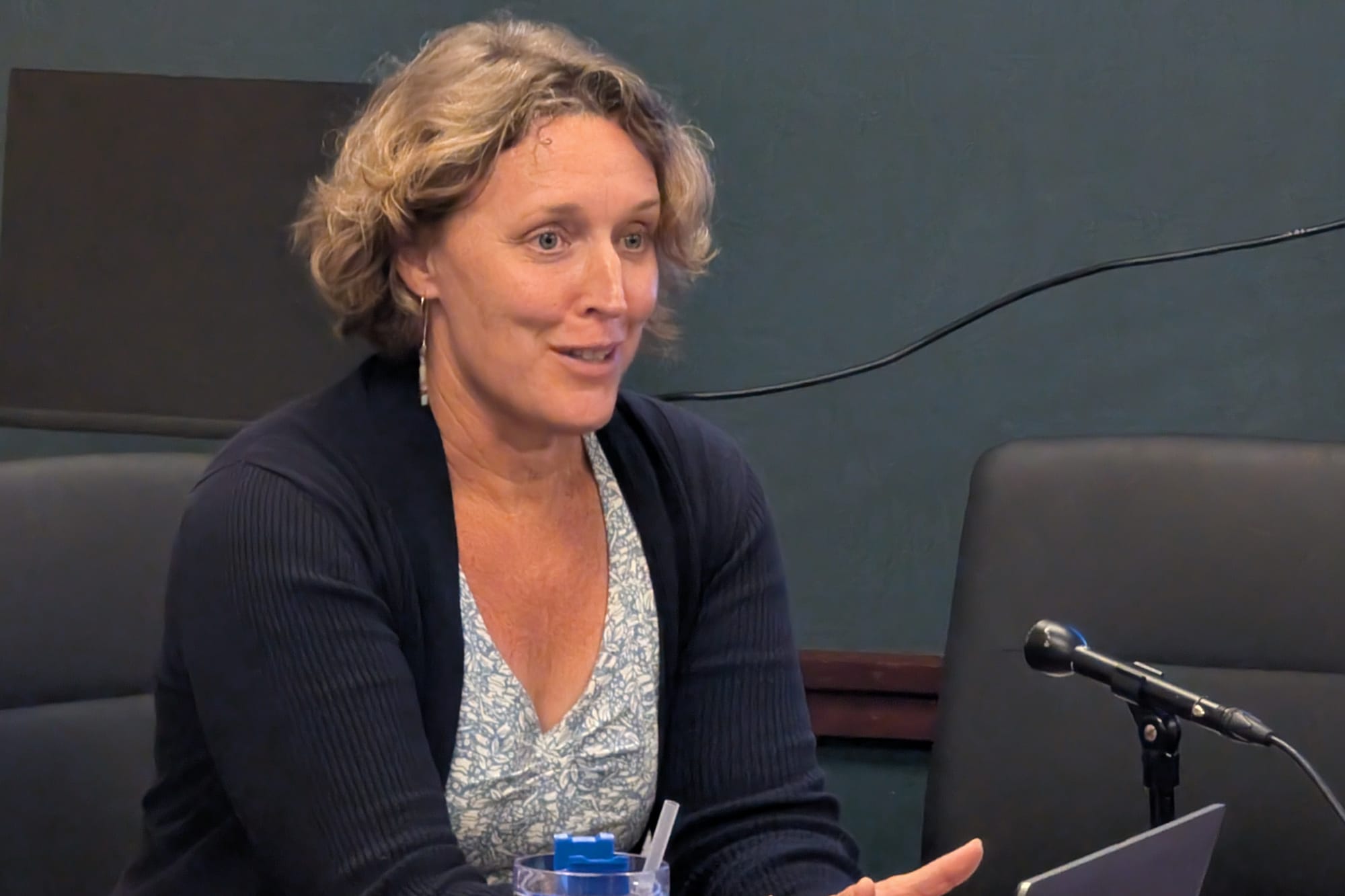
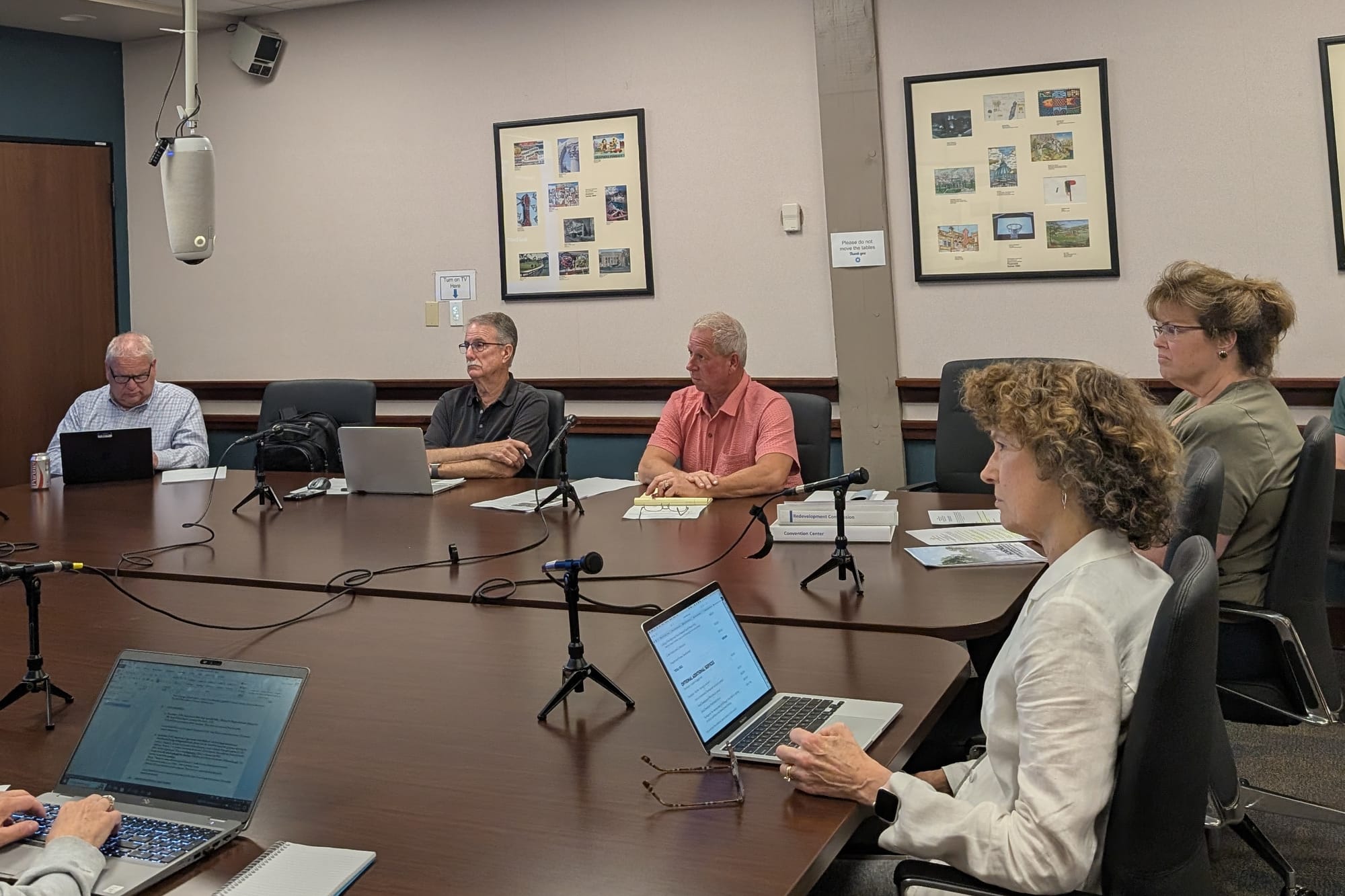
Left: Bloomington mayor Kerry Thomson addresses Bloomington's redevelopment commission (RDC) on Monday. Right: From right: assistant city attorney Dana Kerr; RDC members John West, Randy Cassady, Sue Sgambelluri, and Laurie McRobbie. (Dave Askins, June 30, 2025)
At a special meeting of the city’s redevelopment commission (RDC) late Monday afternoon, Bloomington mayor Kerry Thomson said, “The consultant is ready to go and says … we’ll be ready to move dirt in six months.” Thomson added, “And our departments know it’s my priority to move dirt as quickly as we can.”
Thomson was talking about the construction of additional housing for Bloomington in the Hopewell neighborhood, which is the site of the former IU Health hospital in the vicinity of 2nd and Rogers streets. The consultant that Thomson mentioned is Flintlock LAB, which the RDC authorized at its Monday meeting to start a different process as an alternative to the city’s redevelopment efforts up to now for the former hospital site.
Flintlock’s contract has a not-to-exceed amount of $300,000 but core services totalling just around $180,000. In an interview after the RDC meeting, Thomson told The B Square the intent is not to use the whole $300,000. [Added July 1, 2025: The city of Bloomington has issued a news release about the change in strategy on the development of Hopewell.]
The alternative process is meant to tap several builders—instead of a single developer—by generating pre-approved designs that the city would own, which means the builder’s risk would be reduced. The scale of individual construction projects would be smaller, making them accessible to smaller, local builders, allowing local financing to be pursued. The city’s housing and neighborhood development (HAND) director, Anna Killion-Hanson, described it on Monday as “democratizing neighborhood development through design and policy.”
The kind of housing described for Hopewell South in the second public offering includes single-family houses and townhomes, with a preference for home ownership models.
The city’s efforts so far have included two public offerings for the land called Hopewell South, which is south of 1st Street, on either side of the north-south running Fairview Street. The first public offering was made in early October 2023, but did not result in a decision in favor of any of the respondents. The RDC tried again in mid-September 2024, and gave an initial deadline of Nov. 1, but that was extended to Dec. 8.
At Monday’s meeting, the RDC rejected the two bids it received for the second offering of land in Hopewell South. By early February 2025, U3 Advisors, which is the city’s owner’s representative for the Hopewell redevelopment project, had already analyzed the proposals, and identified significant concerns with them. One proposal was from Rubicon Construction Group and the other from a firm identified as PSKG. [Added July 1, 2025: The proposals from Rubicon and PSKG were released today.]
Given that Bloomington had in early February recognized it would not likely want to pursue either of the proposals, why was there a roughly five-month delay in asking the RDC to reject the two bids? Responding to that question, Thomson indicated to The B Square that it was because there was no clear alternative in place.
Thomson put it like this: “Hopewell has been yet another grassy field owned by the city with high aspirations and very little follow through—outside of the park—so far.” The “park” was a reference to the opening of Hopewell Commons in the last part of April
Thomson continued, “To get proposals back that still were clearly going to not meet the mark without having an alternative, felt like we really deflated Hopewell and and we couldn’t give a better alternative.”
Asked if the “better alternative,” in concert with Flintlock as a consultant, stemmed at least in part from her participation earlier in the year with the Mayors’ Institute of City Design (MICD), Thomson replied: “100 percent.” Also participating with her in the MICD were the city’s planning and transportation director, David Hittle, and the city’s HAND director, Anna Killion-Hanson.
At Monday’s RDC meeting, Killion-Hanson said: “In the midst of a housing crisis, it is imperative that we provide housing for the population who live and work here. This needs to be the housing that our community deserves. We have to get this right.” For the entire site, Bloomington hopes to see somewhere between 750 and 1,000 housing units constructed.
Killion-Hanson said the two proposals received by the city in response to the second public offering “did not appropriately serve the goals and vision of Hopewell South.”
After the RDC meeting, Thomson said that one way the proposals fell short was the amount of subsidy they required. The idea behind the alternative approach now being pursued with Flintlock is to reduce the subsidy needed, in part by reducing the risk. That’s supposed to come from ensuring that the approval process is as smooth as possible. Thomson put it like this: “If the city owns the plan and takes it all the way through approval, that removes the development risk significantly.”
Asked if the city’s current plan to adapt and reuse the former convalescent center at 714 S. Rogers Street as a new police station had a negative impact on Hopewell South developer proposals, Thomson said it had the opposite effect. That’s because the 714 S. Rogers building was a challenge for any developer, because it would have to be an adaptive reuse project or it would have had to be demolished, Thomson said.
In November 2024, the city issued an RFP for Hopewell East, which is the block just west of Morton Street and east of Rogers Street bounded on the north by 2nd Street and on the south by 1st Street. By early April the city had received five responses. It’s not clear how the Hopewell East responses will be evaluated, or what the timeline might be for a Hopewell West public offering,
Thomson indicated that she wanted the approach that the city is now taking for Hopewell South to serve as a model for future housing development. She put it like this: “We’re really proposing to use Hopewell as a guinea pig for how can we get things moving quickly, and how can the city learn from its own red tape, what we could possibly remove to accelerate this timeline.”
Thomson said one potential question would be: How are you going to get Bloomington-appropriate houses with a non-local architect, like Flintlock? Responding to that question, Thomson said, “It’s architects’ jobs to know how to build.” She continued, “We have talked to Flintlock about the possibility of incorporating the Bloomington aspects into these designs, and as much as possible.” Thomson indicated that Flintlock has a lot of experience doing this kind of work, adding, “We would like to get local architects involved, as well as local builders.”
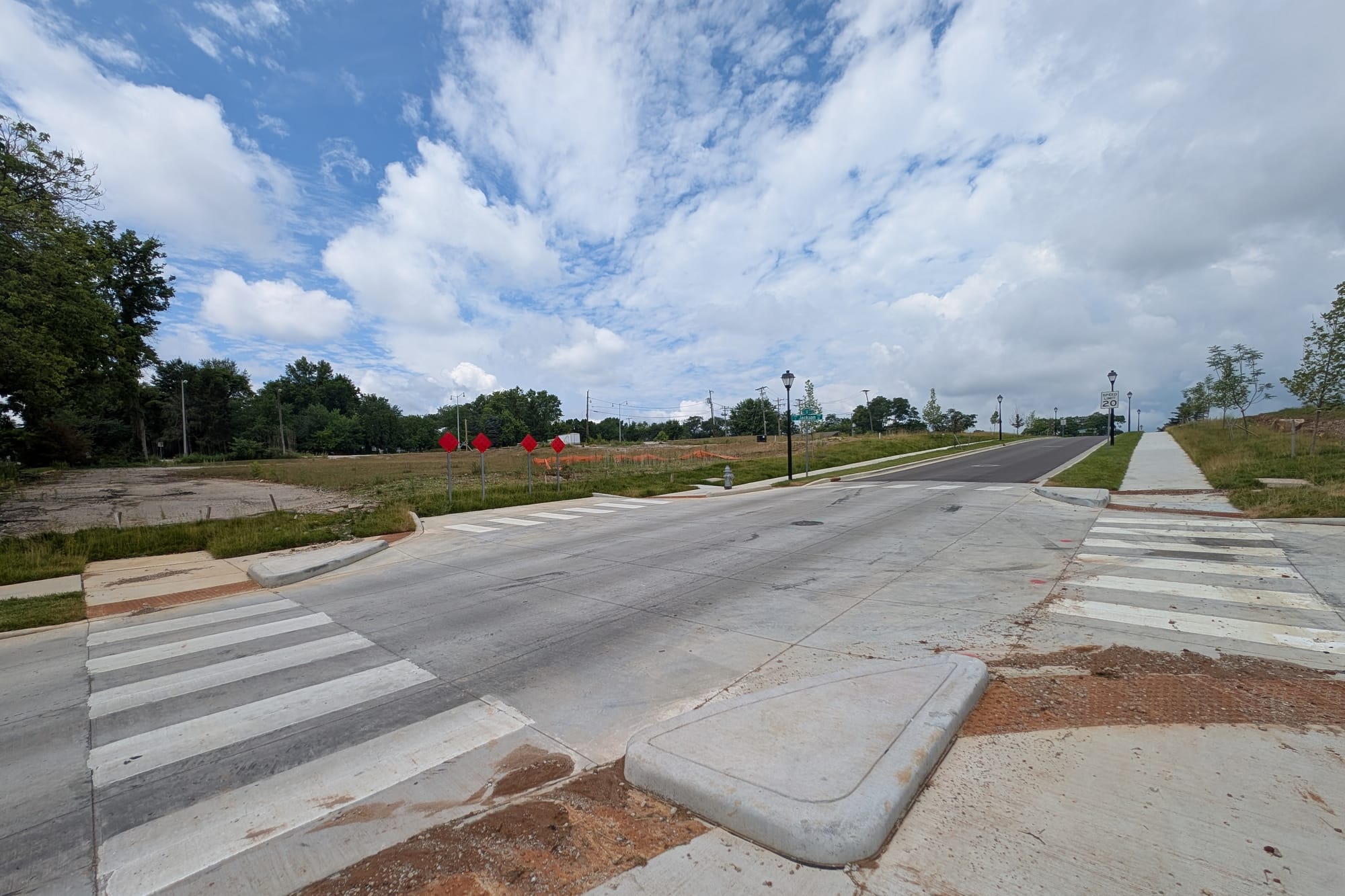
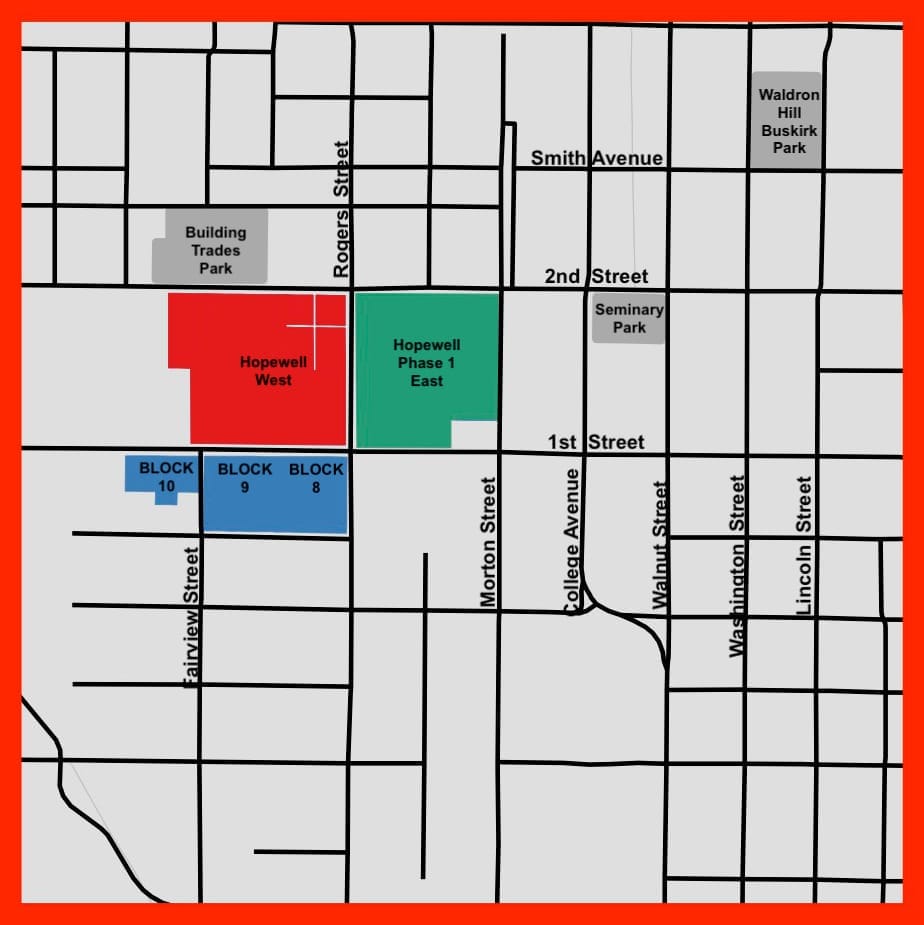
Left: 1st Street looking southwest at Hopewell South. (Dave Askins, June 30, 2025) Right: Map of Hopewell by The B Square.
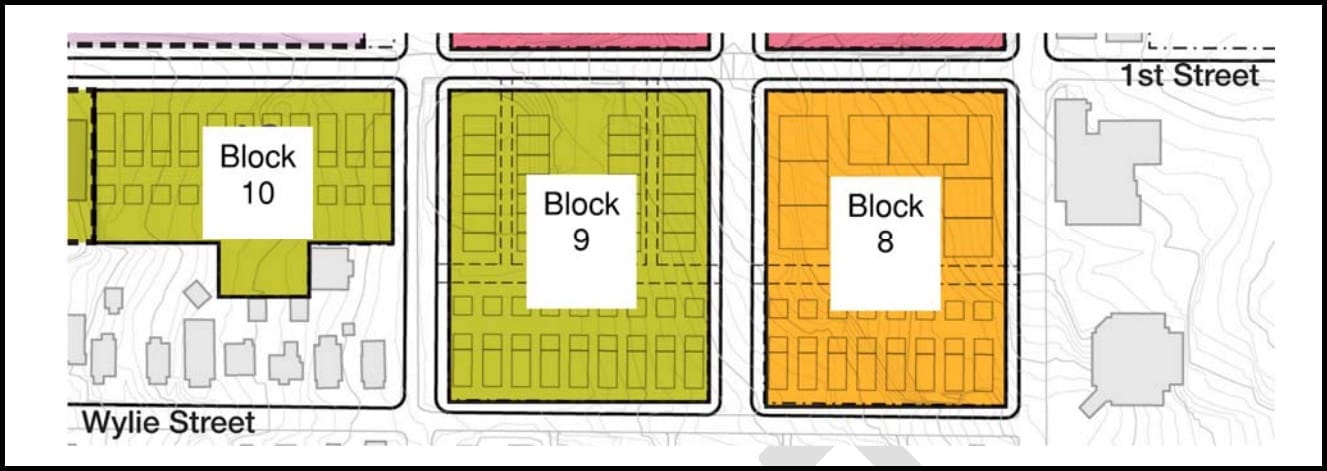
The map from the city's public offering for Hopewell South. Block 8 was not included in the offering—it's the site of the 714 S. Rogers building, which is now planned for use as a new police station.

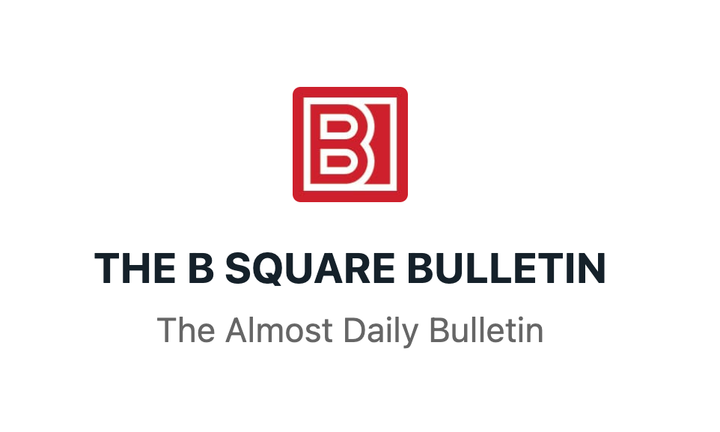
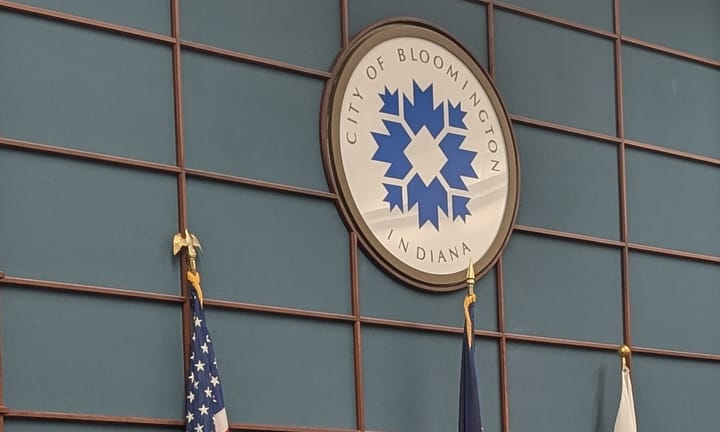
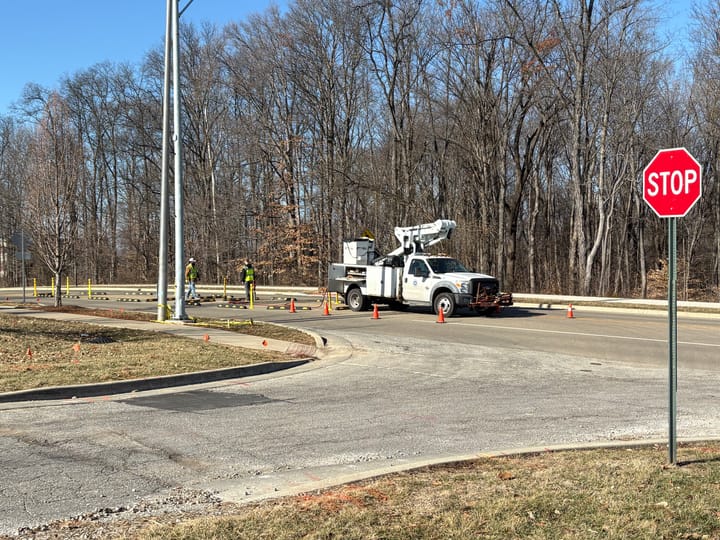
Comments ()